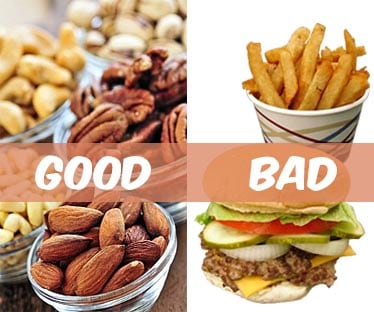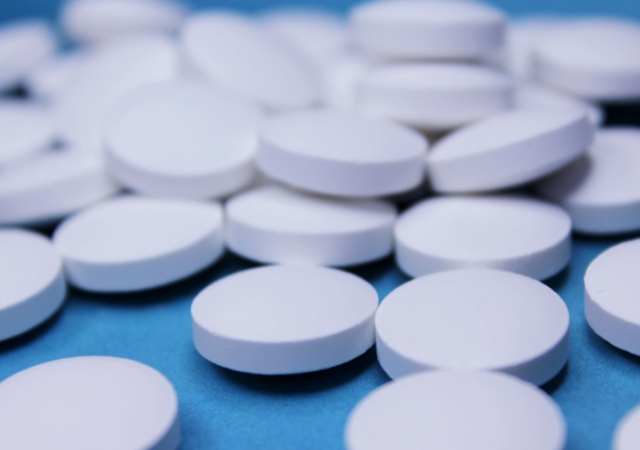
Many people are under the impression that in order to live a healthy lifestyle you must eliminate all fat from your daily diet.
However, this couldn’t be further from the truth. In fact, there are some fats that will help to promote a healthy lifestyle even when you live with diabetes. It’s a good decision to choose much healthier types of fat and when you do enjoy them, do so in moderation.
Let’s look at dietary fat, what it is, how it affects your blood glucose levels and if you need to increase your insulin bolus to help cover for it.
Contents
Low Down Dirty Facts About Fat
There are a number of different kinds of fat out there. When your body takes in too many calories it begins to make its own fat. Some other fats are found in the various foods from animals and plants that you eat, this type of fat is referred to as dietary fat. Dietary fat is considered to be a macronutrient which is responsible for helping to provide energy for your body.
Fat is still high in calories and as you probably are aware, the more calories you consume the more weight you will gain. Some types of dietary fat have even been linked in playing a role in cardiovascular diseases. It’s important before you indulge to do some research ahead of time to determine the benefits as well as the possible harm that fat has. Research has all suggested that while some fat is good for your diet, you want to make sure you avoid all unhealthy or harmful fats.
Types of Harmful Fats
There are two common types of harmful dietary fats:
- Trans Fat: This is the type of fat that occurs naturally in some different types of food in much smaller amounts. However, the vast majority of trans fats are made from oils through a process called partial hydrogenation. These types of trans fats can lead to an increase in the unhealthy cholesterol LDL and a lower amount of healthy cholesterol HDL. They can also increase your chance of developing a cardiovascular disease.
- Saturated Fat: These types of fats come from your animal food sources like red meat, dairy products and poultry. Saturated fat has been known to increase your LDL cholesterol levels and also the risk of developing a cardiovascular disease.
For more health and dietary advice on diabetes see below:
Healthy Fats
While some harmful fats are out there, you do have a choice of healthy fats that add benefit to your diet. These fats include:
- Monosaturated Fatty Acids: These types of fats are found naturally in foods and in oil. Eating a diet that is rich in monosaturated fats has been shown to improve your cholesterol levels and even decrease your risk of developing heart disease. Other research has shown that these types of fats may even benefit blood sugar control.
- Omega-3 Fatty Acids: Another type of fat is made from omega-3 fatty acids; these are especially beneficial to your heart health. They have been found to provide a decrease in coronary artery disease. These types of fats can be found naturally in fatty types of fish, but there are also plant resources that they are found in as well.
- Polyunsaturated Fatty Acids: These types of fats are found mainly in your plant based foods and oils. Evidence has shown that eating polyunsaturated fatty acids can improve your cholesterol and reduce your risk of heart disease.
Foods that have polyunsaturated and monosaturated fat include peanut oil, corn oil and olive oil. Fish is high in omega-3s. The types of fish include salmon, trout, herring, tuna and sardines. Plant based foods are also high in omega-3’s, these sources include canola oil, flaxseed, nuts and various other seeds like sunflower and butternuts.
Changes You Should Make to Your Diet
When thinking about fats that are beneficial and harmful to you, it’s important to consider the changes you should make to your diet. Let your main focus be on replacing foods that are high in saturated fat and instead include foods with polyunsaturated fat and monosaturated fats. But remember too, that there is such thing as too much of a good thing so don’t go overboard when it comes to good fats, because they can be high in calories.
Here are some good tips that can help you to avoid over doing it with fat in your new diet plan:
- To work on avoiding trans fats be sure you are checking the food labels and look for how much trans-fat is in each food item.
- Use oils when you cook instead of the solid types of fats. As an example, use olive oil in replace of butter or canola oil for baking.
- Be sure to include fish like salmon instead of meat in your diet at least two times a week to get your dose of healthy omega-3’s.
- Choose smarter snacks and avoid processed foods which are higher in fat. It’s important to always read the labels to find out exactly what you are eating.
Should You Choose a Low Fat Diet?
Watching your fat intake is a great idea when it comes to your diet, but avoiding it all together isn’t the best strategy you should take. You don’t want to eliminate it from your diet all together. Your body still needs fat, healthy fats to function.
If you avoid it all together you will risk getting an insufficient amount of fat. You may wind up eating more processed foods than you should when you try to avoid fat as well. Instead of getting rid of it all together you should enjoy the healthier fat options in moderation.
How Fat Effects Your Blood Sugar
Fat can have an effect on your blood sugar whether you realize it or not. There have been many studies conducted on how you should consider the amount of insulin you need for higher fatty foods. The interesting part of this research is it was discovered that you do need to bolus for fat to get a more accurate picture of what your blood sugar should be post prandial. The method of bolusing for fat is based on the Warsaw Method and it goes like this.
1 FPU (Fat/Protein Unit) =100kcal of energy
1 FPU= 10 grams of extra carbs added to your carb total
It is recommended if you are pumping to give your carb total as a normal bolus and your FPU carb amount as an extended bolus as follows:
- 3 hours for only 1 FPU
- 4 hrs. for 2 FPU
- 5 hrs. for 3 FPU
- 8 hrs. for >3 FPU
More interesting to note are the following conversions which will help you when determining what to give for an insulin bolus for fat content.
- 1 gram of fat = 9 kcal of energy
Here’s an example of how to handle bolusing for a higher fatty meal.
Meal: Hotdog on a bun (remember to always check the nutrition labels for the most accurate totals)
- Carb Total = 30 grams
- Protein Total= 16 grams (x4 kcal= 64kcal)
- Fat Total: 28 grams (x9 kcal=252 kcal)
The total kcal for the FPU is 316 kcal. This would total an extra 3 FPU or an additional 30 grams which should be spread out over 5 hours’ time.
If you are pumping this would be a bolus of 30 grams for your hotdog as a normal bolus.
And 20 grams of carbs for the FPU total for 4 hours.
Additional links:
Conclusion
When you think about it, diabetes involves a lot of math. It’s important to always talk to your doctor and medical team before making any changes to your normal insulin regime. That being said, ask their opinion on what they think about the Warsaw Method of bolusing additional insulin over extended periods for fat and protein.
TheDiabetesCouncil Article | Reviewed by Dr. Christine Traxler MD on October 09, 2018
References:
TheDiabetesCouncil Article | Reviewed by Dr. Sergii Vasyliuk MD on May 28, 2020








